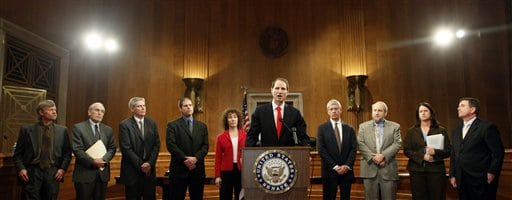As we have been discussing in previous posts/comments, one possible resolution to the forest planning dilemma — as part of NFMA rule development — is to deal with what has been called forest planning under the broad umbrella of adaptive governance, or adaptive co-management.
A part of the process would be to require an “every five years review/evaluation” of ALL decisions related to or interrelated with an administrative unit of the national forest system. This was recommended by the Clinton era Committee of Scientists as I recall. The evaluation, along with a database of all decisions relating to the FS unit would be all that a new rule would require. Specifics required by the law could be packed into the review/evaluation requirements or allowed in other decisions fitting into “ALL decisions” above. Note that most decisions would be appropriately framed (scale and scope) and dealt with as wicked problems (Wikipedia, EcoWatch) at levels above or below the forest administrative unit—on rare occasions “at” the level of the administrative unit.
The “review” might be accompanied by some simple scenario planning (Wikipedia) — which is more the stuff of futuring than of planning — to deal with emergent, but unknown, even unknowable futures. Note that scenario planning specifically avoids the “desired future” trap.
My vision of the every-five-years-evaluation would also allow for “niche” statements to be developed for a forest unit (perhaps for appropriate subunits as well). As with “scenario planning”, the Forest Service/USDA might or might not require niche statements in the NFMA Rule. My preference would be to include both, but with a strong caution not to over-complicate “requirements”, in the rule, in manuals, in handbooks.
I would be pleased to see the Forest Service adopt such a resolution or to at least explain how such is inappropriate framing (Wikipedia) for RPA/NFMA forest planning/management, or inferior to alternate proposals. Maybe some who frequent this blog can step up and explain any inappropriateness in advance of what will likely be yet-another nonresponse from the Forest Service. Or maybe you will like it, and will offer up suggestions for improvement. I am very concerned that the forthcoming “show and tell” NFMA Rule meetings will yield no useful results. So any suggestions coming from us here may be the Forest Service’s best hope to avoid another wasted 30 years.
Related:
The Frame Game
A Simpler Way (Forest Policy-Practice, 2006)
Interrelated Ecosystems and Adaptive Management, (EcoWatch, 1992)






